Jamaica Blue Mountain No. 1 Coffee Bean Story how to cook and drink well with filter cup water powder ratio
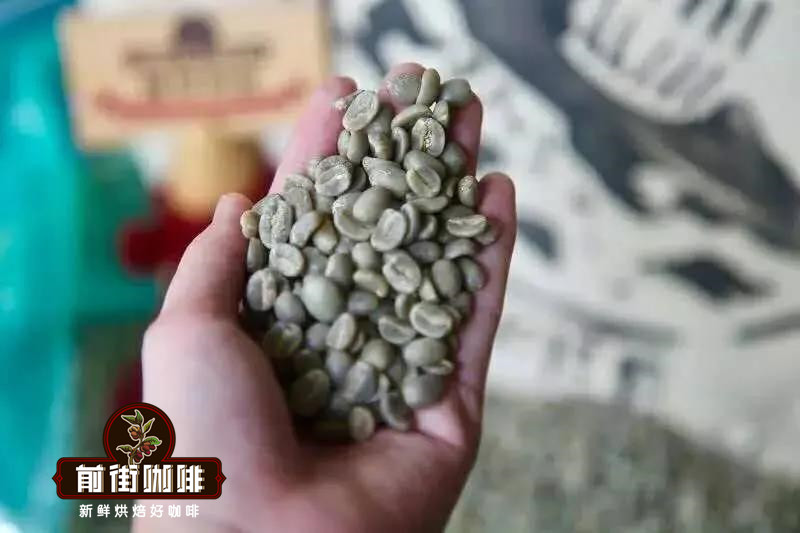
Professional coffee knowledge exchange more coffee bean information please follow the coffee workshop (Wechat official account cafe_style)
If you want to say what coffee is the most beautiful cloud in the sky, I'm afraid everyone has a choice, but you can't forget an old superstar-Blue Mountain Coffee. Yes, even in 2020, Blue Mountain Coffee is still a strong competitor to many new varieties, so that the price of Blue Mountain Coffee is still expensive! But expensive also have to choose, Qianjie today to share with you what is the real Blue Mountain Coffee.
History of Blue Mountain Coffee in Jamaica
The history of Jamaican coffee can be traced back to the 18th century, when King Louis XV of France ordered the cultivation of coffee in Jamaica in 1717, and in the mid-1920s, the Governor of Jamaica Nicholas. Nicholas Lawes imported Arabica seeds from Martinique and began to plant them in St. Andrew. Coffee trees have been introduced into Jamaica and coffee is grown in the Blue Mountains, which is divided into high-altitude Jamaican Blue Mountain Coffee, Alpine Coffee and Jamaican Coffee. Different grades also determine different prices.
Certified authentic Blue Mountain Coffee producing area in Jamaica
The Blue Mountains are located in the eastern part of Jamaica, 1000-1700m above sea level. Only the Blue Mountains planted in this area are authentic Blue Mountain Coffee. Because the mountain is surrounded by the Caribbean Sea, whenever the weather is clear, the sun shines directly on the blue sea, and the mountain peak reflects the bright blue light of the sea, hence its name. Blue Mountain is located in the coffee growing belt, with fertile volcanic soil, fresh air, no pollution, humid climate, foggy and rainy all the year round (the average precipitation is 1980 mm, the temperature is about 27 degrees). This climate has created the world-famous Jamaican Blue Mountain Coffee. The authentic Blue Mountain Coffee producing areas certified by the Government of Jamaica refer to four eastern districts: St. Andrew, St. Thomas (St.Thomas), St. Mary (St.Mary) and Portland (Portland). The washing and tanning Blue Mountains on the front street come from Clifton Manor in Jamaica's certified Blue Mountain coffee producing area. Clifton Manor is also the only rainforest certified in the Blue Mountain growing area. Rainforest certification refers to the use of traditional farming methods cultivated in the shade of primary forests, which are beneficial to the protection of ecosystems. Some of the proceeds from the alliance are also used for the protection of wildlife in tropical rainforest animal reserves and the improvement of workers' living standards.
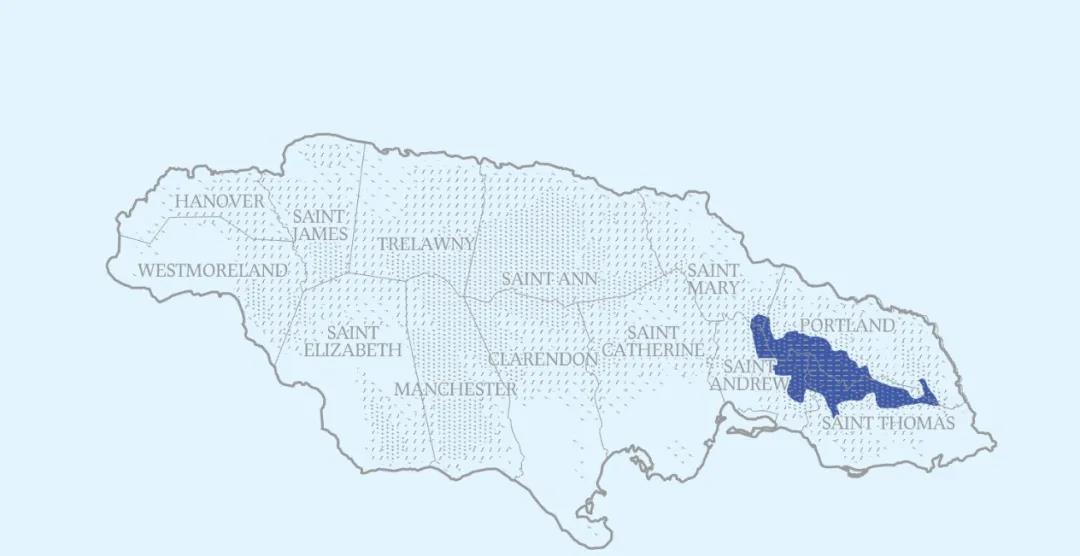
Blue Mountain Coffee planting altitude
The Blue Mountains are located in the eastern part of the island of Jamaica, hence its name because it is surrounded by the Caribbean Sea. On clear days, the sun shines directly on the blue sea, and the peaks reflect the bright blue light of the sea. The highest peak of the Blue Mountains, 2256 meters above sea level, is the highest peak in the Caribbean. It is located in the coffee belt, with fertile volcanic soil, fresh air, no pollution, humid climate, foggy and rainy all the year round (the average precipitation is 1980 mm. (the temperature is about 27 degrees) such a climate has created the world-famous Jamaican Blue Mountain Coffee as well as the highest price in the world. Blue Mountain Coffee must be grown in designated areas and must be 1000-1700m above sea level before it can be crowned with the official Blue Mountain logo.
Why did Japan have priority to purchase Blue Mountain Coffee in the past?
The Jamaican Coffee Industry Committee was established by the Government of Jamaica in 1950 to develop quality standards for Jamaican coffee and to monitor the implementation of quality standards to ensure the quality of Jamaican coffee. The Committee awarded special official seals for raw and roasted coffee exported from Jamaica because the use of Japanese loans improved the quality of production and thus ensured the market. It was not until 2009 that Jamaica ended Japan's priority procurement rights, and in April 2011, the first Blue Mountain No. 1 coffee arrived at Chinese mainland.
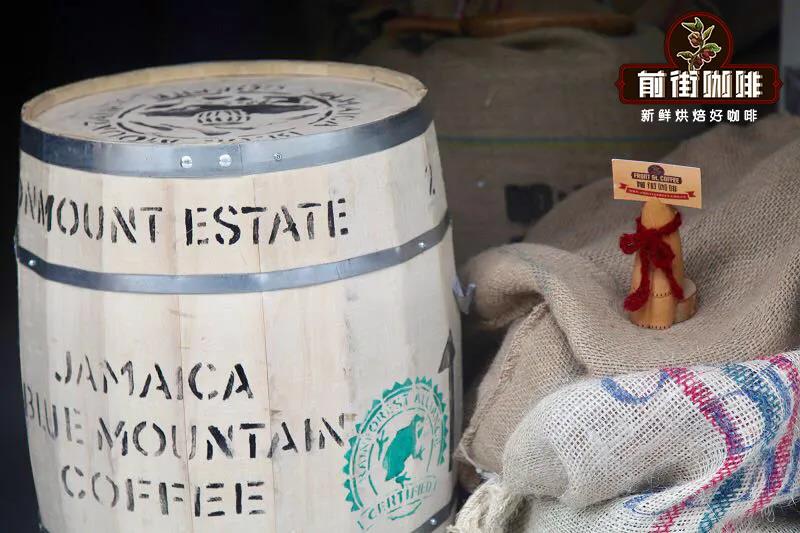
Jamaica Coffee Industry Bureau CIB
Jamaica is the only country in the world that has a government coffee regulatory agency-Jamaica Coffee Industry Authority (CIB), which belongs to the Ministry of Agriculture and Fisheries of Jamaica. The function of CIB is planting technical guidance, processing training, fair trade, quality supervision and a series of things about the quality and brand of Jamaica Blue Mountain. The members of the board of directors of CIB are all owners of more than a certain amount of plantation estates in Jamaica (due to the transfer of industry, the newly certified Blue Mountain Manor in Jamaica requires an area of more than 50 hectares). CIB stipulates that only the blue mountain coffee beans produced in the producing area of Jamaica Blue Mountain more than 2200 feet can be called Jamaica Blue Mountain Coffee. According to the bean size, the grades are NO.1, NO.2, NO.3 and hand-selected PB. Among them, the basic standard of NO.1 Blue Mountain raw beans is beans with more than 17 mesh, defect rate less than 3%, moisture content about 13%, and so on. At present, all the Blue Mountain Coffee exported on the market need to be certified by CIB.
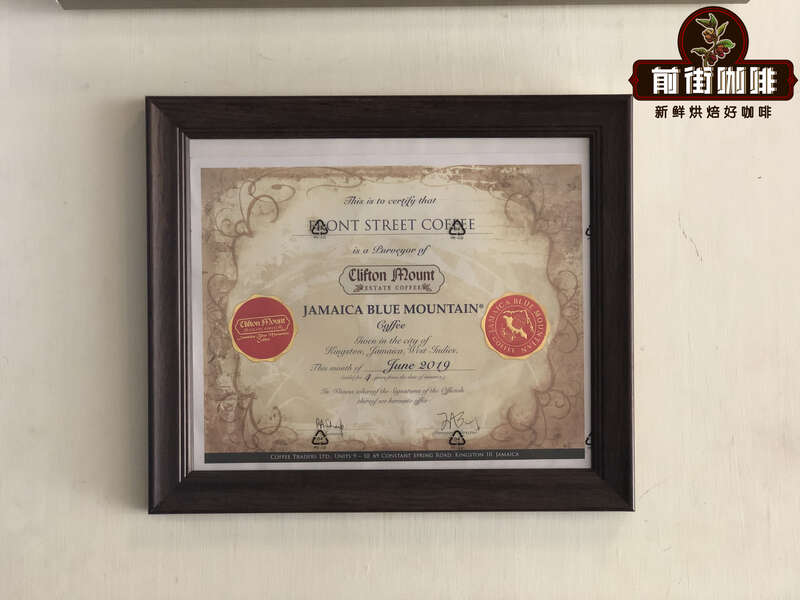
Raw bean grade of Blue Mountain Coffee
From top to bottom in terms of quality, NO.1, NO.2, NO.3 and PB,PB are round beans. According to CIB standards, only coffee grown at 1000-1700 meters above sea level is called Jamaican Blue Mountain Coffee, with low yield, large particles, good quality and harmonious taste, while having appropriate sour, bitter, fragrant, mellow and sweet taste, it is recognized as the best in the world, so the price of Blue Mountain No.1 is the highest of all Blue Mountain Coffee.
(1) No.1-17hammer 18 mesh, the proportion of defective beans does not exceed 2%.
(2) No.2-16 stroke 17 mesh, the proportion of defective beans does not exceed 2%.
(3) No.3-15 hammer 16 mesh, the proportion of defective beans does not exceed 2%.
(4) Peaberry-10MS, the proportion of defective beans does not exceed 2%.
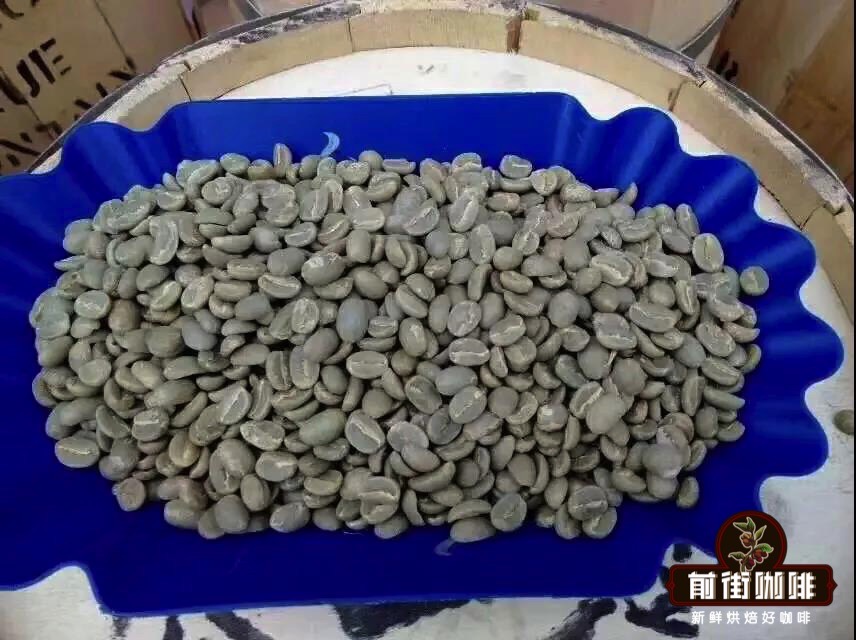
Blue Mountain Coffee varieties
Blue Mountain Iron Card was transplanted from Martinique to Blue Mountain in Jamaica in the 1820s. After more than 200 years, Blue Mountain Iron pickup has evolved better disease resistance, especially better resistance to fruit rot than ordinary iron pickup. However, the Blue Mountain Ironhide Card cannot replicate its sweet and fragrant characteristics when it steps out of Jamaica. The top leaf of the iron pickup is bronzed, the bean body is oval or thin, the tree is tall, the branches are slightly tilted, the angle is 50 Murray 70 degrees, the flavor is elegant, but the physique is weak, the disease resistance is poor, the coffee yield of each tree is very low and the fruit yield is very low.
How to distinguish the real Blue Mountain Coffee
1. The National Coffee Bureau designated an export company. 2. The only producing area where raw beans are filled in wooden buckets. Qianjie should be reminded to pay attention to two misunderstandings when buying Blue Mountains:
One is that many merchants will roast other producing areas or more beans a little deeper, making them lose their flavor characteristics so as to be close to the flavor of Blue Mountain Coffee. This kind of merchants play word games and label non-Blue Mountain coffee beans as "Blue Mountain flavor coffee." As the popularity of Jamaica Blue Mountain Coffee is too high, there are many fake coffee on the market, such as Blue Mountain Coffee, Blue Mountain mixed Coffee, or directly called Blue Mountain Coffee. However, these operators mimic the taste of Jamaican Blue Mountain Coffee and mix all kinds of coffee beans by themselves, and the mixed coffee produced may not have a single real Jamaican Blue Mountain coffee bean in it.
While the other is some practitioners, the understanding of Blue Mountain is still more than 10 years, thinking that Blue Mountain coffee has been bought by Japan, what China sells is not the real Blue Mountain No. 1 coffee. In fact, due to the huge market demand in China, Blue Mountain has been normally imported for many years. Blue Mountain coffee garden owners have also visited China in recent years to further let Chinese consumers know more about Blue Mountain coffee beans. The Blue Mountain of the Chinese market is not rare to the extent that it is fake. Now the producing area of Jamaican Blue Mountain Coffee is larger than before, and the consumption power of Japan has become weaker recently, so the real Jamaican Blue Mountain Coffee is also sold in China, as long as you know how to identify it, you can buy the real thing.
Treatment of blue mountain coffee beans
Until 2019, Blue Mountain Coffee at Clifton Farm used water washing to treat raw coffee beans. During the treatment, first remove the peel and pulp and let it ferment for 18 hours, then put the fermented beans into the pool and pass them back and forth, using the friction of the beans and the power of running water to wash the coffee beans until smooth and clean. After washing, at this time, the coffee beans are still wrapped in the pericarp with a moisture content of 50%. They must be dried to reduce the moisture content to 12-14%, otherwise they will continue to be mellow, moldy and rotten. After that, the coffee beans are screened and stored in a special warehouse.
、
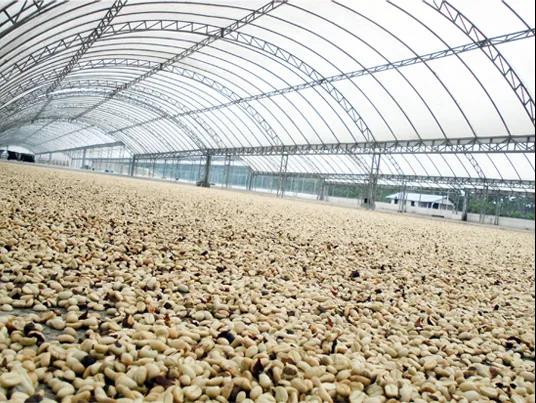
In the new production season in 2020, Clifton Farm launched the blue mountain coffee beans with sun treatment for the first time, which is really novel. Jamaica has a tropical rainforest climate, with the rainy season from May to June and September to November every year, with the most showers in January and May. However, the harvest and treatment season of Jamaican Blue Mountain Coffee is from February to June each year, and half of the time is spent on the rainy season, so it is obviously impractical to use sun treatment. In addition, the quality of traditional sun-treated coffee is unstable, and the quality of coffee depends on the mood of God. In addition, if you want better quality sun treatment, the labor cost is higher than water washing and other treatments. When coffee fruits are dried in the sun, they need to be turned manually every few hours to maintain ventilation, reduce mildew and ensure uniform drying. Such a thankless treatment was even more difficult in Jamaica. There is a sun-treated Blue Mountain coffee on the front street coffee (also certified for export by the Jamaican Coffee Board, of course). In fact, the production of this sun-dried Blue Mountain Coffee is also very difficult. Before, Blue Mountain Coffee has always insisted on using only water washing treatment, that is because water washing is the most essential embodiment of Blue Mountain flavor, and changing the treatment method will certainly change its flavor structure. Of course, Blue Mountain Coffee adopts sun treatment, which is more in line with the needs of the development of the market.
Analysis of raw beans of Qianjie coffee
Observe the raw beans of Blue Mountain for the first time, no matter in the sun or in water, the particles are very full, the eyes are balanced, the two ends are slightly warped, and the shape is oval. From the side, the bean body is flat and thin, which is a kind of iron card with pure blood. Sun beans look yellowish green with more silver skin, while washed beans are turquoise with less silver skin. This is because the washed beans are soaked in the water for a long time, the silver skins are separated from the coffee beans, and the outer silver skins are peeled off by the way when the parchment is finally removed, and there is little silver left on the surface of the washed raw beans.
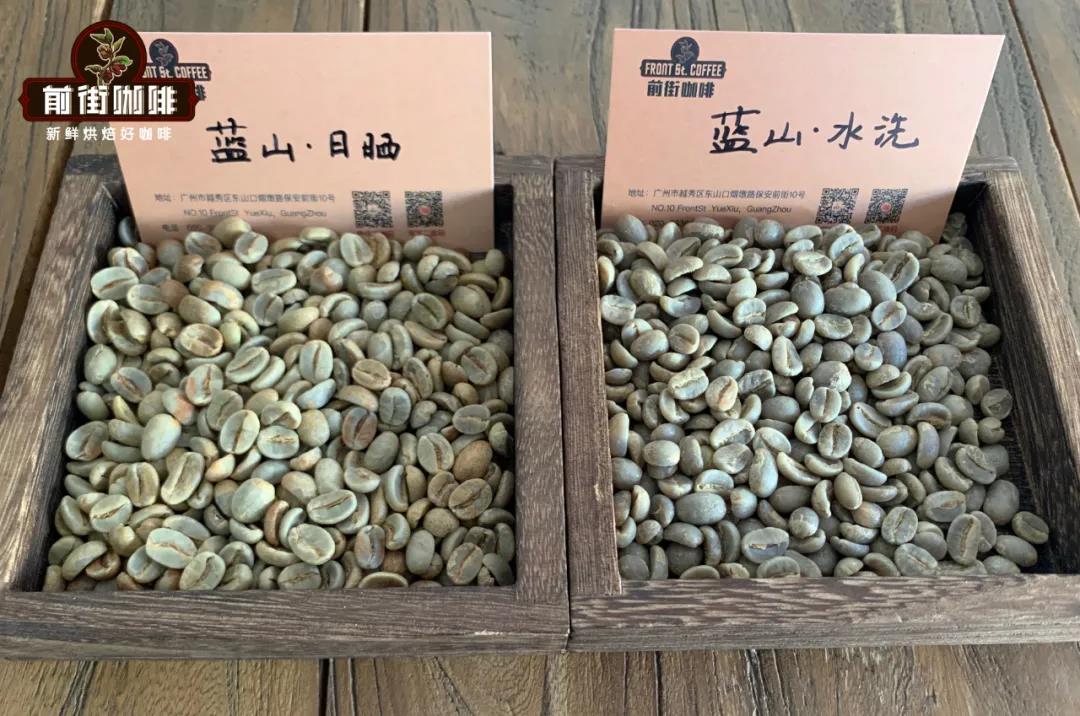
Experience of coffee baking in Qianjie
Washed Blue Mountain Coffee: the stove temperature is 170 degrees Celsius, the fire power is 140 degrees after the throttle is set for 1 minute, the throttle is unchanged, the temperature is 153 degrees, the bean table turns yellow, the smell of grass disappears completely, dehydration is completed, the firepower is adjusted to 115 degrees, and the throttle is changed to 4. In the 8th & # 39th minute, ugly wrinkles and black markings appear on the bean surface, and the smell of toast obviously changes to the smell of coffee, which can be defined as a prelude to explosion. at this time, listen clearly to the sound of an explosion point, and start to explode at 8 degrees 39 ". Adjust the firepower to 90 degrees, the throttle is fully open (adjust the firepower to be very careful, not to be so small as to be free of bursting sound), and put the pot at 201.3 degrees.
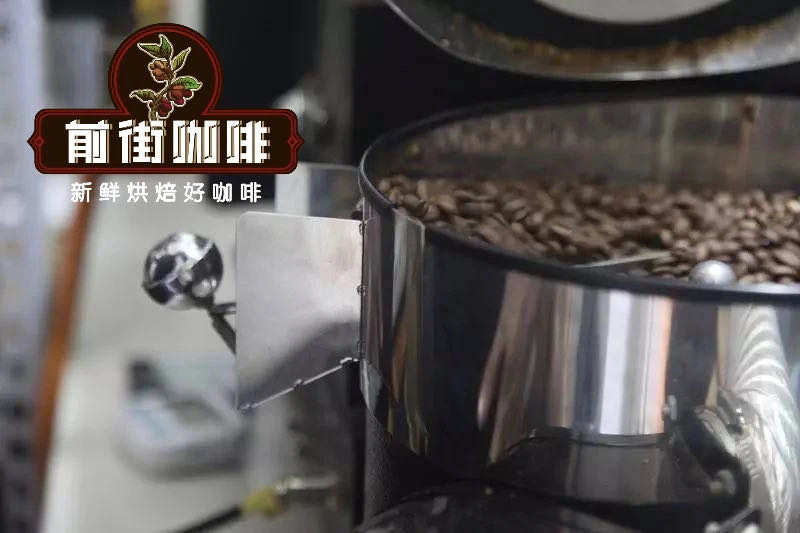
Sun-dried Blue Mountain Coffee: the furnace temperature is 165℃, the firepower is 130min, the throttle is set up 3; the temperature recovery point is 1pm / 39th / 32 ", when the furnace temperature is 95.8℃, the firepower is unchanged; the baking door is adjusted to 4min in 3 minutes and the firepower is increased to 140min. When the bean surface turns yellow, the smell of grass disappears completely, and enters the dehydration stage, when the bean surface appears ugly wrinkles and black markings on the bean surface, the smell of toast obviously changes to the smell of coffee, which can be defined as a prelude to an explosion. At this time, it is necessary to listen clearly to the sound of an explosion point, to 10 minutes after the start of an explosion, the development of 3 minutes after an explosion, 198.5 ℃ into the pot.
Coffee cup test report on Qianjie
Qianjie Coffee will be tested within 8-24 hours after the sample beans are roasted. Qianjie coffee makers generally use the cup test bowl capacity of 200ml ceramic bowl, which will be marked with 150ml and 200ml scale, according to SCAA standards, the TDS of water is about 150ppm, TDs is too low will easily cause over-extraction, too high will affect the taste and easy to lack of extraction, the cup measured the use of water temperature of 94 °. The cup test grinding degree according to the cup test standard of SCAA, the grinding degree is controlled as 20 standard screen (0.85mm), and the passing rate is 70% Mel 75%. Ratio: 11 grams of coffee powder plus 200 milliliters of hot water, that is, 1VR 18.18, so that the concentration of extraction happens to be within the range of 1.15% Murray 1.35% gold cup, soaking time: 4 minutes.
Measurement of washed Blue Mountain Coffee Cup
Dry fragrance: roasted peanuts, hazelnuts, melons, chocolate
Wet fragrance: oolong tea, caramel, honey, chocolate, almonds
Flavor: roasted nuts, chocolate, almonds, melons, honey, sweet and sour balance
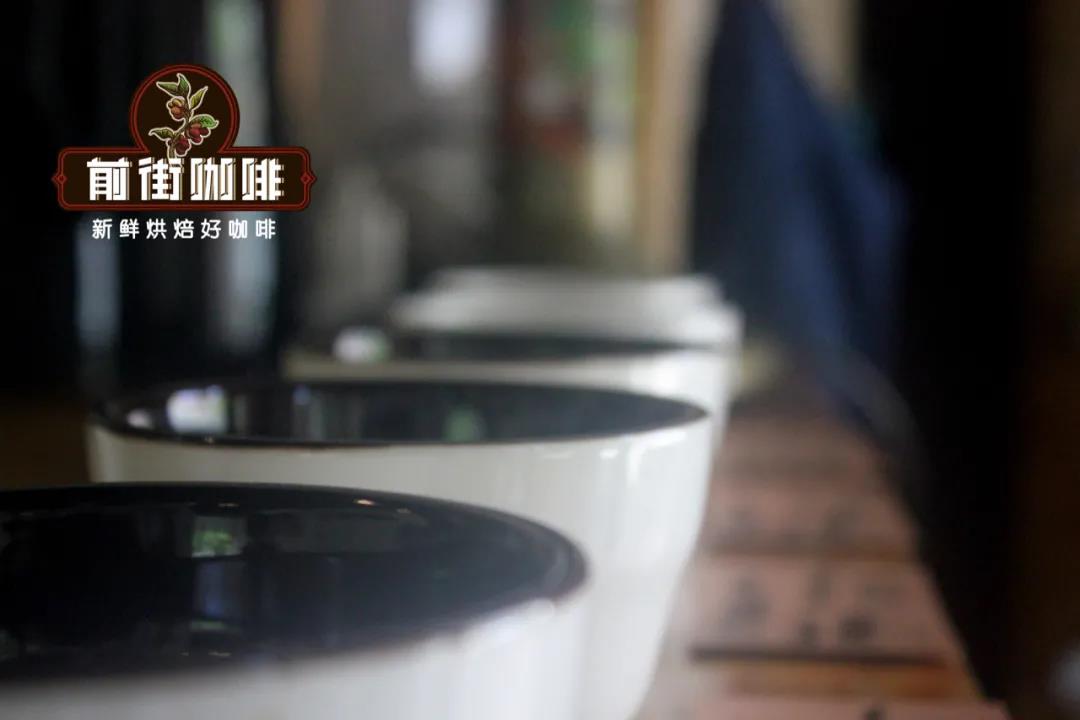
Sun Blue Mountain Coffee Cup Test
Dry incense: nuts, wood
Shixiang: caramel
Flavor: berries, plums, mulberries, black cocoa, nuts, slightly fermented
Experience of brewing coffee in Qianjie
Filter cup: Kono
Powder content: 15g
Powder / water ratio: 1:13
Degree of grinding: medium and coarse grinding (60% of standard sieve 20)
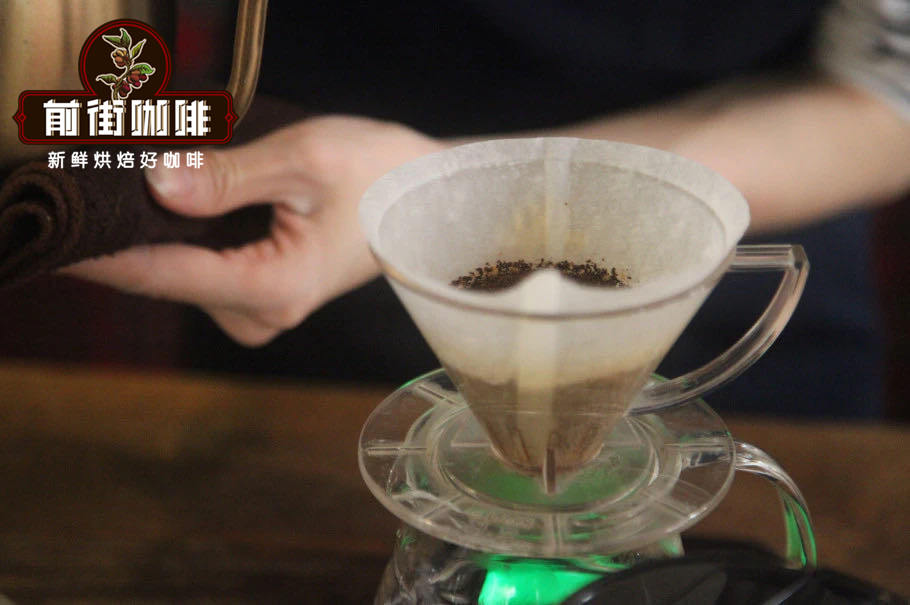
Qianjie segmented cooking technique: 30 grams of water is steamed for 30 seconds, then the small flow center slowly injects 100 grams of water outward, that is, the electronic scale shows 130 grams. Then when the powder layer drops to 1 stroke, 65 grams of water is injected into 2 places, reaching a total of 195 grams of water. After all the coffee liquid of the filter cup flows into the next pot, remove the filter cup and end the extraction. The total cooking time is 1 minute and 50 seconds.
[sun Blue Mountain] the entrance has a sweet taste of brown sugar with sour berries, a nutty cocoa flavor in the middle and back, a creamy taste, rich and obvious layers, and a walnut aroma in the finish.
[washed Blue Mountain] the entrance has dark chocolate, nutty flavor, high cleanliness, very bright, good mellow thickness, sweet and sour balance.
Compared with the two Blue Mountains one, the flavor of Sun Blue Mountain is more layered, and the sweet and sour quality gives people a very comfortable feeling, while the washed Blue Mountain maintains the classic Blue Mountain flavor, which is smooth, bright and mellow. The delicate balance of joys and sorrows is full of praise.
For more boutique coffee beans, please add private Qianjie coffee on Wechat. WeChat account: kaixinguoguo0925
Important Notice :
前街咖啡 FrontStreet Coffee has moved to new addredd:
FrontStreet Coffee Address: 315,Donghua East Road,GuangZhou
Tel:020 38364473
- Prev
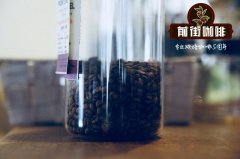
Peru's organic coffee industry and to which countries Peruvian coffee beans are mainly exported.
Professional coffee knowledge exchange more coffee bean information please follow the coffee workshop (Wechat official account cafe_style) Peru's organic coffee industry, coffee beans are mainly exported to which countries Peru is located in western South America, bordering the South Pacific, between Chile and Ecuador. Peru has a very diverse climate, from the tropics in the east to the dry deserts in the west, from the temperate zone
- Next
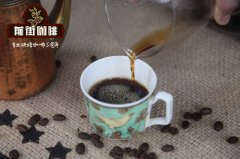
Coffee bean producing countries have a strict grading system. What are the specific standards for Kenyan coffee?
Professional coffee knowledge exchange more coffee bean information please follow the coffee workshop (Wechat official account cafe_style) Kenyan coffee has always been considered one of the best coffee producing areas, political instability, low coffee transaction prices and other factors have caused farmers in the producing areas to give up growing coffee at an alarming rate, while young people are more likely to move to the cities to look for payroll.
Related
- Detailed explanation of Jadeite planting Land in Panamanian Jadeite Manor introduction to the grading system of Jadeite competitive bidding, Red bid, Green bid and Rose Summer
- Story of Coffee planting in Brenka region of Costa Rica Stonehenge Manor anaerobic heavy honey treatment of flavor mouth
- What's on the barrel of Blue Mountain Coffee beans?
- Can American coffee also pull flowers? How to use hot American style to pull out a good-looking pattern?
- Can you make a cold extract with coffee beans? What is the right proportion for cold-extracted coffee formula?
- Indonesian PWN Gold Mandrine Coffee Origin Features Flavor How to Chong? Mandolin coffee is American.
- A brief introduction to the flavor characteristics of Brazilian yellow bourbon coffee beans
- What is the effect of different water quality on the flavor of cold-extracted coffee? What kind of water is best for brewing coffee?
- Why do you think of Rose Summer whenever you mention Panamanian coffee?
- Introduction to the characteristics of authentic blue mountain coffee bean producing areas? What is the CIB Coffee Authority in Jamaica?

